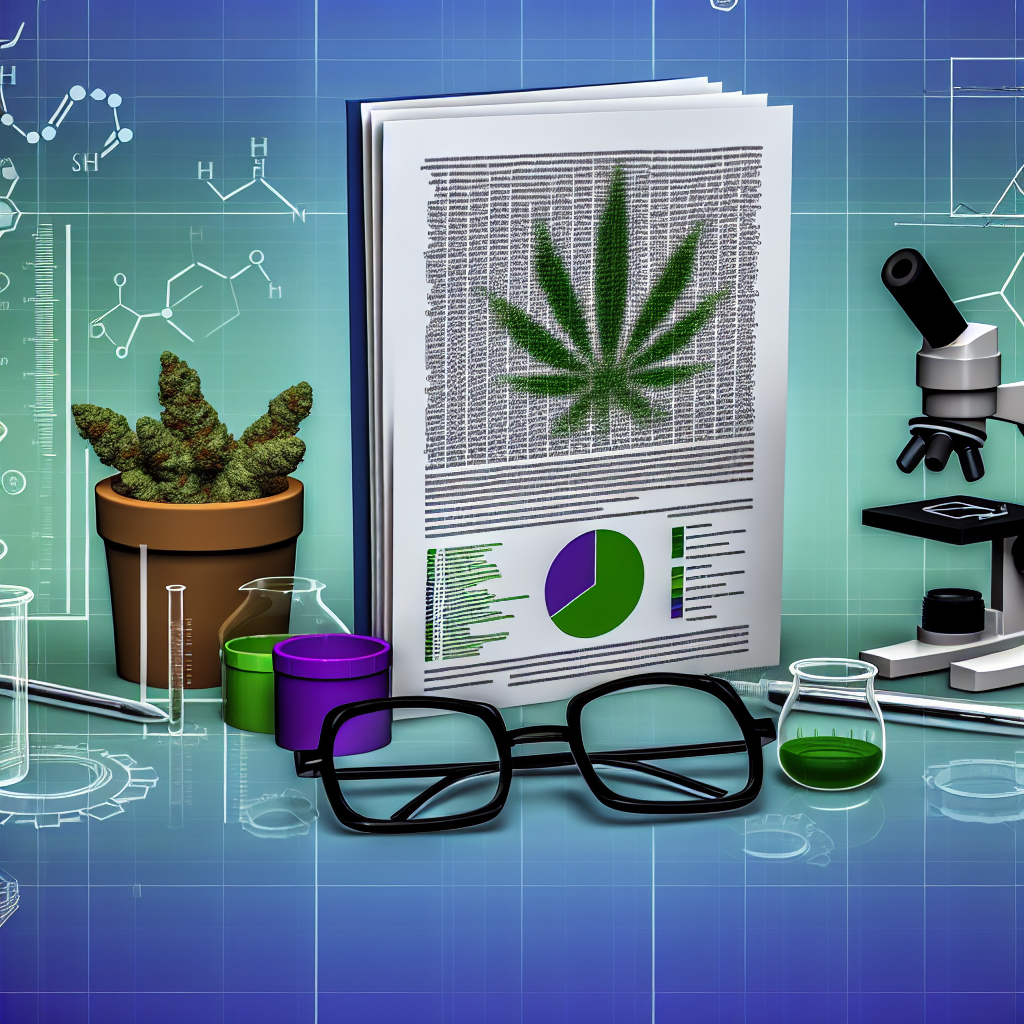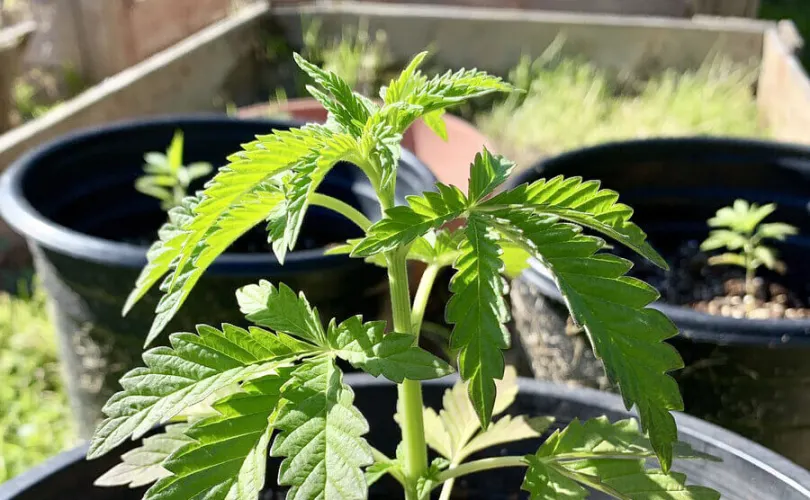Cannabis Testing: Understanding Lab Reports
Introduction: Why Cannabis Lab Testing Matters
As the cannabis industry continues to grow, lab testing has become an essential component in ensuring product safety, potency, and compliance. Whether you are a consumer seeking high-quality cannabis or a dispensary owner aiming to provide verified, top-tier products, understanding cannabis lab reports is crucial. These reports, also known as Certificates of Analysis (COAs), provide detailed insights into the chemical composition of cannabis, including cannabinoid content, terpene profiles, and the presence of potential contaminants.
Cannabis testing is not just about determining THC and CBD levels—it extends to screening for pesticides, heavy metals, mold, and residual solvents. These tests ensure product safety and help combat misleading labeling practices in an industry that is still evolving in regulatory oversight. Different states and countries have various testing requirements, making it even more important for both consumers and professionals to know how to read and interpret lab reports accurately.
For consumers, understanding these reports helps make informed purchasing decisions based on potency, terpene composition, and safety. Whether you’re looking for a high-THC strain for recreational use or a full-spectrum CBD product for therapeutic benefits, lab reports provide the necessary insight into what you’re consuming. For professionals in the cannabis industry—such as cultivators, manufacturers, and dispensary owners—lab testing is a fundamental process to ensure compliance with regulatory standards and maintain consumer trust. Any discrepancies in lab results can have significant legal and financial consequences, underlining the necessity for transparent, third-party-verified results.
Despite their importance, lab reports can be challenging to interpret for individuals unfamiliar with scientific terminology or testing methodologies. Understanding terms like “LOQ” (Limit of Quantification), “CFU” (Colony-Forming Units), and “ND” (Not Detected) is particularly important when evaluating microbial screenings, heavy metal concentrations, and chemical residuals.
In this article, we will explore the critical elements of cannabis lab testing, break down how to read a COA, and discuss the significance of recent medical and scientific studies on cannabis testing. By the end, you’ll be equipped with the knowledge needed to make informed choices regarding cannabis safety and quality.
The Science Behind Cannabis Testing
Cannabis lab testing follows a stringent scientific process designed to assess product safety and potency. Over the years, numerous studies have underscored the importance of cannabis testing in ensuring consumer safety and regulatory compliance.
Cannabinoid Profile and Potency: Decoding THC, CBD, and More
One of the primary aspects of cannabis testing is determining the concentration of cannabinoids, including THC, CBD, CBG, and CBN. High-performance liquid chromatography (HPLC) is the standard method used to assess cannabinoid potency since it does not require heat-induced decarboxylation, preserving the full chemical composition of the sample ([Giese, et al., 2015](https://www.sciencedirect.com/science/article/abs/pii/S0021967315005910)).
Understanding the ratios of cannabinoids found in a COA allows both consumers and professionals to assess product effectiveness. For medical cannabis patients, precise dosing is essential, and lab reports provide the necessary breakdown of active compounds.
Terpene Profiling: Why Aroma and Flavor Matter
Terpenes are aromatic compounds responsible for the scent and flavor of cannabis. Beyond aesthetics, terpenes have been studied for their potential medicinal benefits. A 2021 study published in *Frontiers in Pharmacology* explored the synergistic relationship between cannabinoids and terpenes, known as the “entourage effect,” which enhances therapeutic outcomes ([Ferber, et al., 2021](https://www.frontiersin.org/articles/10.3389/fphar.2021.640128/full)).
Terpene profiles included in lab reports help consumers select strains best suited for specific effects, such as relaxation, pain relief, or focus. For cannabis professionals, understanding terpene content is crucial in product formulation and branding.
Contaminant Testing: Ensuring Safety from Pesticides, Heavy Metals, and Molds
Safety is one of the most critical aspects of cannabis lab testing. Several studies highlight the dangers of contaminants in cannabis, particularly for immunocompromised individuals.
– Pesticides: A 2019 investigation in *Environmental Health Perspectives* found significant pesticide residues on cannabis samples, emphasizing the need for stringent regulatory measures in cannabis farming ([Tomczyk et al., 2019](https://ehp.niehs.nih.gov/doi/full/10.1289/EHP.1900672)).
– Heavy Metals: Heavy metals such as lead, mercury, and cadmium can accumulate in cannabis plants due to soil contamination. A 2020 study in *Toxics* revealed that certain cannabis strains are “hyperaccumulators,” meaning they absorb heavy metals from the soil at higher rates than other plants ([Eboh, et al., 2020](https://www.mdpi.com/2305-6304/8/3/65)). Lab reports typically contain results for heavy metal screenings, providing assurance that the product meets safety guidelines.
– Microbial Screenings: Mold, fungi, and bacteria can pose significant health risks. A medical study published in *The Journal of Clinical Microbiology* in 2017 documented cases of fungal infections linked to contaminated cannabis, highlighting the necessity of microbial safety checks ([Thompson, et al., 2017](https://journals.asm.org/doi/full/10.1128/JCM.01245-17)).
Residual Solvent Testing: How Safe Are Cannabis Extracts?
For cannabis concentrates such as oils, vapes, and tinctures, residual solvent testing is paramount. Solvent-based extraction methods often leave trace amounts of chemicals like butane and propane, which, if not properly purged, can be harmful. A study in the *Journal of Toxicology* (2018) established safe consumption thresholds for such solvents while warning about the dangers of prolonged exposure to unregulated cannabis products ([Björklund et al., 2018](https://www.hindawi.com/journals/jt/2018/6519730/)).
Conclusion: Stay Informed, Stay Safe
Understanding cannabis lab reports is essential for both consumers and industry professionals. These reports provide critical insights into potency, cannabinoid and terpene composition, and the absence of harmful contaminants. With the growth of the cannabis market, education surrounding lab reports is key to ensuring safe, effective, and high-quality products. Whether you are selecting cannabis for personal use or supplying customers, the ability to interpret Certificates of Analysis empowers you to make informed, responsible decisions. As regulatory frameworks continue to develop, lab testing will remain a cornerstone of the cannabis industry, reinforcing consumer confidence and product integrity.
**Summary:**
Understanding cannabis lab reports is crucial for both consumers and industry professionals. These reports provide detailed insights into the chemical composition of cannabis, including cannabinoid content, terpene profiles, and the presence of potential contaminants. Cannabis testing ensures product safety, potency, and compliance with regulatory standards. By interpreting lab results, consumers can make informed purchasing decisions, while professionals can maintain consumer trust and comply with legal requirements.
**References:**
– [Giese, et al., 2015](https://www.sciencedirect.com/science/article/abs/pii/S0021967315005910)
– [Ferber, et al., 2021](https://www.frontiersin.org/articles/10.3389/fphar.2021.640128/full)
– [Tomczyk et al., 2019](https://ehp.niehs.nih.gov/doi/full/10.1289/EHP.1900672)
– [Eboh, et al., 2020](https://www.mdpi.com/2305-6304/8/3/65)
– [Thompson, et al., 2017](https://journals.asm.org/doi/full/10.1128/JCM.01245-17)
– [Björklund et al., 2018](https://www.hindawi.com/journals/jt/2018/6519730/)




